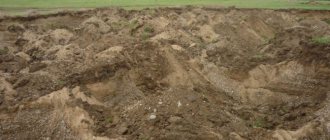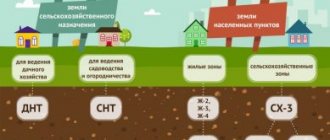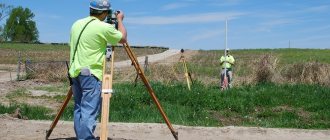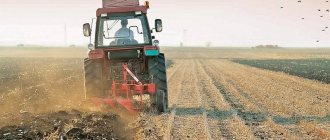Transfer of land from one category to another
The characteristics of land plots and the parameters of their types of use may change over time, and a situation may also arise that using a land plot for its intended purpose is impossible or unprofitable, and this often concerns “agricultural” lands. In accordance with the current legislation, land for “agricultural” purposes, used not for its intended purpose, and also not in accordance with the type of permitted use, can be seized from the owner to return into circulation unused arable land plots that could produce crops. Since 2020, the procedure for confiscation of land plots has been simplified by law if they are not used or used in violation of the law. To avoid such cases, the interested person should transfer the land plot to another category.
The procedure for transferring land is regulated by the Federal Law on the transfer of a category of land to another category. The procedure for transferring a land plot to another category is not simple, it has a number of features, and without some experience it can take a lot of time, and given the complexity of the process and the imperfection of the legislation, without the help of specialists in this field, it can be extremely difficult to resolve an issue of this kind.
All lands in the Russian Federation are divided into the following categories:
- agricultural land – land plots used for agricultural needs.
- lands of settlements are areas on which construction and development of settlements is carried out.
- industrial lands are land plots that are located outside the boundaries of populated areas and are intended or used to support the activities of organizations and (or) the operation of industrial facilities, as well as for the placement of production, administrative buildings, structures, structures and facilities serving them.
- lands of specially protected territories and objects are lands withdrawn from public use that have special environmental, scientific, historical, cultural, aesthetic, recreational, health and other valuable significance.
- forest fund lands are land occupied by forests and land predetermined for the restoration of forest plantations.
- water fund lands - lands covered by surface water - reservoirs, rivers, lakes and land along the coastline, as well as lands occupied by hydraulic engineering and other structures located on water bodies.
- Reserve land is land that is under state or municipal jurisdiction.
The process of transferring a land plot to another category begins with a petition, which must be submitted by an interested person, in which the current category, the desired one, the cadastral number of the land plot, and the justification for changing the existing category to the desired one must be indicated. Also, along with the application, the necessary package of documents for the transferred land plot is submitted. Consideration of a petition to transfer a land plot from one category to another may be refused in two cases: if the petition was submitted by an inappropriate person or the relevant documents are not attached to the petition. It should be noted that the legal holders of land plots are considered not only the owners, but also those persons who use the land plot, including tenants. Persons entitled to apply for a transfer may be legal entities, individuals and individual entrepreneurs.
It is also important to note that the transfer of agricultural land to any other category is prohibited if such a land plot falls into the category of “especially valuable” land. The transfer of agricultural land to another category is necessary not only in cases where the owner intends to use this plot for other purposes, but can also be considered as a preventive measure in order to protect oneself from the legal seizure of agricultural land in in accordance with the Federal Law “On the turnover of agricultural land” dated July 24, 2002 N 101-FZ.
It should also be noted that the transfer of agricultural land to another category inevitably entails a multiple increase in the capitalization of this asset, but, in turn, increases the tax base.
In other cases, in accordance with the law on the transfer of land to another category, the issue of changing the category will be resolved:
- in relation to the transfer of agricultural land to another category, by state authorities of the constituent entities of the Russian Federation,
- if the owner of the land plot is the state, then the decision will be made only by the Government of the Russian Federation,
- in all other cases, the decision to change the category is made by the federal executive body authorized by the Government of the Russian Federation.
Also, in addition to the transfer of agricultural land to another category, the following questions are also complex:
- on the transfer of lands of settlements to other categories and vice versa;
- on the transfer of water fund lands to another category and vice versa;
- on the transfer of forest fund lands to another category and vice versa;
- on the transfer of settlement lands to another category and vice versa;
- on the transfer of industrial land to another category and vice versa;
- on the transfer of reserve lands to another category and vice versa;
But nevertheless, if all actions are performed correctly and the correct procedure for transferring land to another category is followed, then the chances of successfully transferring land plots from one category to another are significantly high!
Before a decision is made to transfer a land plot from one category to another, it will be necessary to decide on the purposes of its further use. This will be a decisive factor in choosing the appropriate category and type of permitted use.
The cost is quite individual and depends on many factors. The exact amount for the provision of such a service can be determined by Nobel Law Firm only after specialists have carried out a preliminary analysis of the complexity of the work ahead and its volume. You can also find out the initial cost of transferring land to another category on our website in the “Prices” section or by calling us by phone.
I would also like to draw your attention to the fact that after transferring a land plot from one category to another, its cadastral value will change, which will affect the amount of property tax.
If the cadastral value is overestimated, then the tax will be correspondingly overestimated. The cadastral value results can be challenged both in court and in pre-trial proceedings.
Considering the complexity of the process and the imperfection of legislation, it is very difficult to resolve the issue without the help of specialists in this field.
Our company will be happy to help
you at all stages, from changing the category to recalculating property tax to the Federal Tax Service!
You can find out the cost of our services in the Prices section
What decision can be made on an application for transfer of agricultural land?
According to statistics at the end of 2020, every year citizens in each subject submit 40–50 applications to transfer land territory to another category. Of these, the department grants only about 10% of requests.
If the department makes a positive decision, then after signing the act it must notify the authorities, who enter the information into a unified real estate database. Simply put, the new status of the land must be registered in the Unified Register.
The most common reason for refusal is that none of the conditions listed in Article 7 of Federal Law No. 172 are met. Agricultural land can be transferred to another category and a house can be built on it only after the boundaries of the settlement have been changed. You can appeal the decision within 3 months. To do this you will need to go to court.
Sources:
Features of the transfer of agricultural land to land of another category
general information
The area of agricultural land is quite large. In this regard, they are located outside the boundaries of populated areas. These territories are intended for conducting certain types of activities related to agriculture. There are the following categories of agricultural land:
- For livestock.
- To organize a subsidiary farm.
- For the production of agricultural products.
- For gardening.
- To organize a farm.
- For country house construction.
This list is established in Art. 76 ZK. If you legally own agricultural land, is it possible to build a house? The regulations establish rules depending on the permitted use of the plot. To answer the question posed, it is advisable to consider the main types separately.
What is the difference between land plots allocated for production?
Changing the purpose of a land plot today is regulated by the provisions of the Land Code of the Russian Federation and Federal Law No. 172-FZ dated December 21, 2004 (current edition dated July 29, 2017, hereinafter referred to as Federal Law 172). Before starting the procedure for transferring the category of land plot to another legal status, the owner (user) will need to clarify whether the legislation can allow such changes. The provisions of Federal Law 172 establish restrictions and mandatory conditions that must be observed to change the category of a particular type of land:
- For ZSHN. The transfer of such valuable plots for the state on a general basis is prohibited (clause 2 of article 7 of Federal Law 172). Exceptional circumstances allowing changes are provided for plots whose value is lower than 50% of the average cadastral price of land in the region. The law includes the following reasons for changing the category as such conditions:
- conservation of the territory;
- creation of especially valuable zones;
- expansion of the ZNP;
- planned construction of industrial structures;
- transfer to the water or forest fund, to land reserve zones, if the territory of the agricultural reserve has become unsuitable for exploitation;
- construction of roads, power lines, pipelines;
- for defense needs, implementation of international government projects;
- planned development of mineral resources on site;
- placement of social facilities, including for education and healthcare, if there is no other territory for the construction of this facility.
- RFP. It changes along with the expansion (decrease) of the limits of the settlement (Article 8 of Federal Law 172).
- Industrial zones can be transferred to other categories without special restrictions (Article 9 of Federal Law 172), but subject to complete restoration according to a reclamation plan.
- Lands with a special status (protected, valuable). They are transferred to another category extremely rarely due to the loss of valuable properties (Article 10 of Federal Law 172). Conversely, any territory, with the exception of the ZNP, can receive the status of a specially protected zone, if there are conditions for creating a tourist, environmental or other similarly valuable zone in this area.
- Forest and water areas. They are transferred when creating particularly valuable areas or constructing an object of state (municipal) importance, and are also integrated into the expanding boundaries of the settlement (Articles 11, 12 of Federal Law 172).
We invite you to familiarize yourself with the Step-by-step actions when selling an apartment.
It should be clarified that restrictions on the transfer of a specific territory to another category may be imposed by special regulations. You can find out for sure whether the transfer procedure can be carried out for a specific plot by sending a request in advance to the land and property department of the municipality in whose department this land is located.
Plots of the first type are difficult to develop, because old buildings are located here and various engineering communications have been laid that have lost their relevance. Before starting the construction of new buildings and creating the infrastructure of modern industrial production, a lot of effort and money will be required to get rid of unnecessary residues.
Territories of the second type were previously cultivated for agricultural crops, they are located far from cities and towns, there are no old houses, buildings, or communication lines. These lands also require large financial investments, because industrial production begins to develop almost from scratch.









